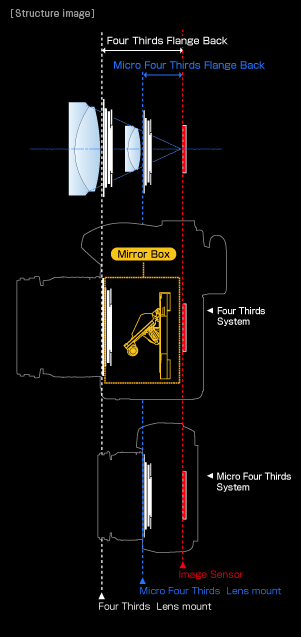To give a quick introduction of the Micro Four Thirds System camera, I extracted one of my academic report for MFT as following:
The Micro Four Thirds System Specification (MFT Specification) is an extension of the Four Thirds System Specification for interchangeable-lens type digital camera systems and has been established as a means to enhance the potential for size and weight reduction of the current Digital Single Lens Reflex (DSLR) System. Currently, Olympus and Panasonic are the 2 companies to produce this Mirrorless Interchangeable Lenses (MIL) camera.
It inherits the benefits of the Four-Thirds type image sensor device, i.e. Olympus E-System DSLR and Panasonic DSLR L-series, such as the optimum balance between size reduction and high picture quality, and is intended to deal with expected future needs such as further size and weight reduction of camera systems, increased emphasis on Live View shooting, and demand for movie shooting capability.
These requirements have been met by shortening the flange back length by 50% (because of removing the mirror box that only existed in conventional DSLR), adding the signal compacts for improving the speed and stability of signal exchange between the lens and body, and reducing the lens mount diameter to facilitate system size reduction.Compared to Sony NEX system, and Samsung NX system which is using APS-C sensor, even though the body can be designed in very small size, BUT the lenses can't escape from HUGE size .... this is mainly due to the problem of large sensor. From this perspective, M43 camera created a perfect sensor size to match the size and quality of the photo required by the user.
 |
| Micro Four Third System Camera Structure |
(for more detail, please refer to: http://www.four-thirds.org/en/microft/index.html)
MFT logo:
 |
| From "http://www.four-thirds.org/en/microft/logo.html" |
I hope the quick introduction i extracted here can help people to appreciate more for the on going popular Micro Four Third (MFT, M43) system camera. The system camera that i owned, Lumix G1, is the first MFT camera created by Panasonic. I am going to post more information regarding to this technology and why is it so important in the system camera era, please follow me !



